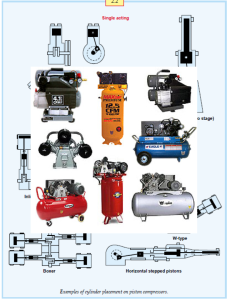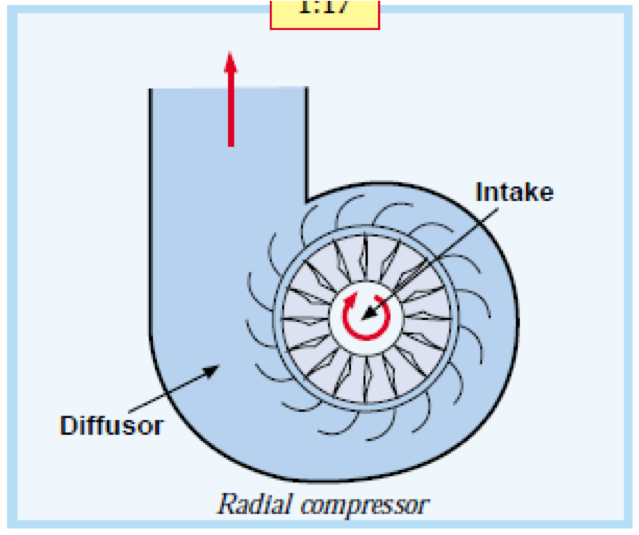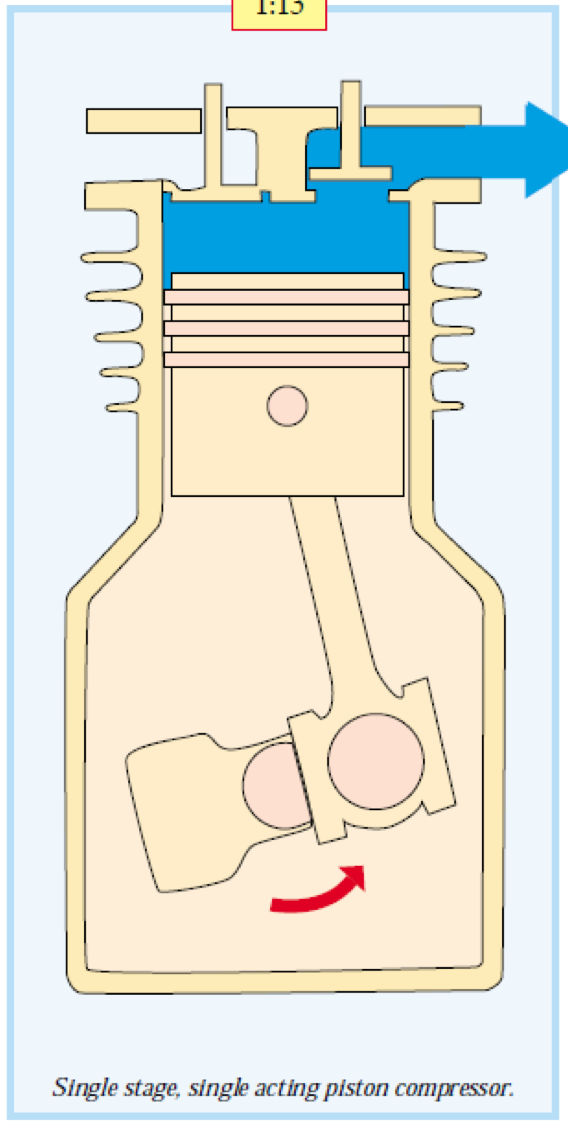Part 2 – Reciprocating Compressors
Air and Gas Compression
Types of Compressors
There are two general classes of compressors:
1) Positive displacement
2) Dynamic
Those can further be broken into subtypes:

Let’s take a closer look at Positive Displacement Compressors.
Positive Displacement Compressors
Given quantity of air or gas is trapped in a compression chamber. The volume it occupies is mechanically reduced, causing a corresponding rise in pressure prior to discharge. This provides high compression ratios for small to medium flow applications.
Positive displacement compressors can be further categorized into reciprocating or rotary. Let’s take a closer look at reciprocating compressors which can further be subcategorized as small or large.

Small reciprocating compressors
|
Larger reciprocating compressors
|
- L-type with vertical low pressure cylinder and horizontal high pressure cylinder is most common on double acting, large compressors.
- Pressures up to about 1000 kPa in single-stage.
- V configuration is the most common for small compressors.
- Pressures up to about 7000 kPa in two-stage.
- Pressures up to about 50 MPa (7,250 psi) require special machines such as the three, four, five, or six-stage type compressor.
Reciprocating can be categorized into 2:
- Single-acting Compressors have only one compression stroke per stage for each crankshaft revolution.
- Double-acting Compressors have air is compressed on each side of the piston alternatively, so there are two compression strokes for each crankshaft revolution.
Multi-stage compressor cylinders may be arranged in a number of different ways.
-
- Side by side horizontally or vertically with a common crankshaft
- In line, with the pistons actuated by a common crankshaft
- Radially arranged with the connecting rods coupled to a common crankshaft
Dynamic Compressors
Dynamic compressors are impart velocity energy to continuously flowing air or gas using impellers rotating at very high speeds. Velocity energy is changed into pressure energy both by the impellers and the discharge volutes or diffusers. They are most efficient at lower compression ratios but can accommodate much higher flows. There are two major types of dynamic compressors:
Centrifugal (Radial) compressor
|
Axial Compressor
|
- Illustration of a Radial Compressor
- Illustration of a Single stage, single acting piston compressor
Air Compressor Valves
Most compressors have self-acting valves. Self-acting valve opens and closes through pressure differences on the sides of the valve disk. Plate type inlet and discharge valves are commonly used.
An important feature in valve design is the resistance to air flow.To enable air to flow through a pipe or restricted passage, there must be a pressure difference between the inlet and outlet. This difference depends upon the amount of air passed through the restriction and also upon the area of the restriction. Even if the valve area is large, there is some restriction to the flow. There must also be some pressure difference or the valve does not open.



